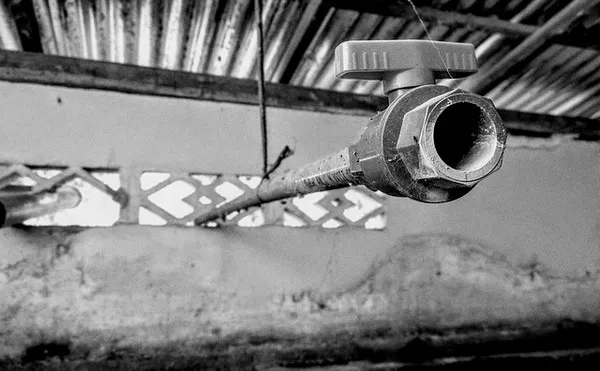India, a country with a diverse and rapidly growing population, faces significant challenges in managing its wastewater. The proliferation of industries, urbanization, and agricultural practices has led to the generation of vast quantities of wastewater. To address this issue, India has invested in wastewater treatment infrastructure over the years. In this article, we delve into the current state of wastewater treatment in India, providing insights into the number, types, and distribution of wastewater treatment plants across the country.
The Need for Wastewater Treatment in India
Wastewater treatment is crucial for safeguarding public health, preserving natural ecosystems, and ensuring the sustainable use of water resources. In India, the demand for freshwater is escalating due to population growth, urbanization, and industrialization. Simultaneously, the discharge of untreated wastewater into rivers, lakes, and groundwater sources poses significant environmental and health risks. To mitigate these challenges, wastewater treatment facilities play a pivotal role.
Understanding the Types of Wastewater Treatment Plants
Wastewater treatment plants in India can be categorized into several types based on their functions and the scale of operation. These include:
Sewage Treatment Plants (STPs): Sewage treatment plants primarily treat domestic wastewater from urban areas. They employ physical, chemical, and biological processes to remove impurities and contaminants, making the water safe for release into the environment or reuse.
Industrial Effluent Treatment Plants (ETPs): Industries generate a substantial volume of wastewater with unique chemical compositions. ETPs are designed to treat industrial effluents, ensuring compliance with environmental regulations and preventing the discharge of harmful pollutants.
Common Effluent Treatment Plants (CETPs): CETPs are shared facilities that treat wastewater from multiple small and medium-scale industries located in industrial clusters. These plants are cost-effective and reduce the environmental impact of individual industries.
Decentralized Wastewater Treatment Systems (DEWATS): DEWATS are smaller-scale treatment systems often used in rural and peri-urban areas. They provide localized solutions for wastewater treatment and can include various technologies such as anaerobic digesters and constructed wetlands.
Tertiary Treatment Plants: Tertiary treatment plants further polish wastewater treated in STPs or ETPs, producing high-quality reclaimed water suitable for non-potable uses like irrigation and industrial processes.
The Number of Wastewater Treatment Plants in India
India had made substantial progress in establishing wastewater treatment infrastructure. According to data from the Central Pollution Control Board (CPCB) and the Ministry of Jal Shakti, there were over 3,000 wastewater treatment plants in the country. These plants had a combined treatment capacity of approximately 40,000 million liters per day (MLD). However, it is essential to note that these numbers are dynamic, and there might have been significant developments in the sector since then.
The Distribution of Wastewater Treatment Plants
Wastewater treatment plants in India are not uniformly distributed across the country. They are primarily concentrated in urban and industrial areas with high wastewater generation rates. Here’s a brief overview of the distribution of wastewater treatment plants in India:
Metropolitan Cities: Major metropolitan cities like Delhi, Mumbai, Kolkata, and Chennai have extensive wastewater treatment infrastructure due to their high population densities and industrial activities. These cities host large sewage treatment plants and industrial effluent treatment facilities.
Industrial Hubs: States with prominent industrial hubs such as Gujarat, Maharashtra, and Tamil Nadu have a significant number of wastewater treatment plants, including ETPs and CETPs, to manage industrial effluents.
Urban Areas: Urban areas, including tier-II and tier-III cities, have been expanding their sewage treatment capacities to cope with increasing urbanization. Many smaller municipalities have also invested in decentralized treatment systems.
Rural Regions: Rural regions often rely on simpler wastewater treatment solutions like septic tanks and open drains. However, there is a growing awareness of the need for decentralized wastewater treatment systems in rural areas to prevent water contamination.
Challenges and Opportunities
While India has made commendable progress in wastewater treatment, several challenges persist:
Infrastructure Gaps: There is a need for continued investment in wastewater treatment infrastructure to meet the growing demand, particularly in smaller towns and rural areas.
Maintenance and Operation: Ensuring the efficient operation and maintenance of existing treatment plants is crucial to prevent equipment breakdowns and ensure the longevity of the infrastructure.
Technological Upgrades: The adoption of advanced treatment technologies, such as membrane bioreactors and nutrient removal systems, can improve the quality of treated wastewater.
Industrial Compliance: Stricter enforcement of environmental regulations is necessary to ensure industries adhere to effluent discharge standards and invest in effective treatment systems.
Resource Recovery: Exploring opportunities for resource recovery from wastewater, such as biogas generation and nutrient recycling, can make wastewater treatment more sustainable.
Conclusion
Wastewater treatment in India has come a long way, with thousands of treatment plants serving various purposes across the country. However, as India’s population and industrial activities continue to grow, there is a pressing need for further investment in wastewater treatment infrastructure, technology upgrades, and stricter regulatory enforcement. By addressing these challenges, India can ensure the sustainable management of its wastewater resources, safeguard public health, and protect the environment for future generations.

